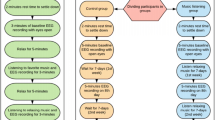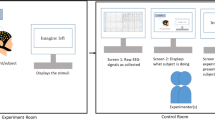Abstract
Electroencephalography (EEG) analysis is used in neuroscience and commercial models. Machine learning algorithms have historically been used to discover important knowledge of classification. Access to large EEG datasets in recent years has led to the use of deep learning models, particularly in the EEG signal analysis. The automatic classification of EEG signals with the help of Deep Learning is one of the changing points in EEG analysis. While using machine learning algorithms we had to handpick the features, which is now not required using deep learning. EEG classification tasks are done using convolutional neural networks and recurrent neural networks. EEG signals of 32 participants were recorded as each watched 40 music videos which were 1-minute long. Participants rated each video in terms of the levels of arousal, valence, like/dislike, and dominance. This paper gives detailed information on the dataset used, EEG preprocessing method, and also deep learning architecture. This paper also addresses specific recommendations for hyperparameter tuning.
Access this chapter
Tax calculation will be finalised at checkout
Purchases are for personal use only
Similar content being viewed by others
References
Bhardwaj A, Tiwari A, Chandarana D, Babel D (2014) A genetically optimized neural network for classification of breast cancer disease. In: 2014 7th international conference on biomedical engineering and informatics, Dalian, pp 693–698. https://doi.org/10.1109/BMEI.2014.7002862
Devarriya D et al (2020) Unbalanced breast cancer data classification using novel fitness functions in genetic programming. Expert Syst Appl 140:112866
Purohit A, Bhardwaj A, Tiwari A, Choudhari NS (2011) Removing code bloating in crossover operation in genetic programming. In: 2011 international conference on recent trends in information technology (ICRTIT), pp 1126–1130. https://doi.org/10.1109/ICRTIT.2011.5972430.
Bhardwaj H et al (2019) Classification of electroencephalogram signal for the detection of epilepsy using innovative genetic programming. Expert Syst 36.1:e12338.
Sakalle A et al (2021) A LSTM based deep learning network for recognizing emotions using wireless brainwave driven system. Expert Syst Appl, 114516
Liu Y, Sourina O, Khoa Nguyen M (2021) Real-time EEG-based emotion recognition and its applications. Trans Comput Sci XII, 256–277
Tripathi S et al (2017) Using deep and convolutional neural networks for accurate emotion classification on DEAP dataset. In: Proceedings of the thirty-first AAAI conference on artificial intelligence
Asghar MA et al (2019) EEG-based multi-modal emotion recognition using bag of deep features: an optimal feature selection approach. Sensors 19.23:5218
Jirayucharoensak S, Pan-Ngum S, Israsena P (2014) EEG-based emotion recognition using deep learning network with principal component based covariate shift adaptation. Sci World J 2014
Bhardwaj A, Tiwari A (2013) A novel genetic programming based classifier design using a new constructive crossover operator with a local search technique. In: Huang DS, Bevilacqua V, Figueroa JC, Premaratne P (eds) Intelligent computing theories. ICIC 2013. Lecture notes in computer science, vol 7995. Springer, Berlin, Heidelberg
Bhardwaj H et al (2018) Breast cancer diagnosis using simultaneous feature selection and classification: a genetic programming approach. In: 2018 IEEE symposium series on computational intelligence (SSCI). IEEE
Acharya D et al (2020) Emotion recognition using fourier transform and genetic programming. Appl Acoust 164:107260
Acharya D et al (2020) A novel fitness function in genetic programming to handle unbalanced emotion recognition data. Patt Recognit Lett
Acharya D et al (2020) An enhanced fitness function to recognize unbalanced human emotions data. Expert Syst Appl 114011
Acharya D, Goel S, Bhardwaj H, Sakalle A, Bhardwaj A (2020) A long short term memory deep learning network for the classification of negative emotions using EEG signals. Int Joint Conf UK 2020:1–8. https://NeuralNetworks(IJCNN), Glasgow. https://doi.org/10.1109/IJCNN48605.2020.9207280
Author information
Authors and Affiliations
Corresponding author
Editor information
Editors and Affiliations
Rights and permissions
Copyright information
© 2021 The Author(s), under exclusive license to Springer Nature Singapore Pte Ltd.
About this paper
Cite this paper
Acharya, D., Ahmed Sayyad, R., Dwivedi, P., Shaji, A., Sriram, P., Bhardwaj, A. (2021). EEG Signal Classification Using Deep Learning. In: Tiwari, A., Ahuja, K., Yadav, A., Bansal, J.C., Deep, K., Nagar, A.K. (eds) Soft Computing for Problem Solving. Advances in Intelligent Systems and Computing, vol 1392 . Springer, Singapore. https://doi.org/10.1007/978-981-16-2709-5_30
Download citation
DOI: https://doi.org/10.1007/978-981-16-2709-5_30
Published:
Publisher Name: Springer, Singapore
Print ISBN: 978-981-16-2708-8
Online ISBN: 978-981-16-2709-5
eBook Packages: Intelligent Technologies and RoboticsIntelligent Technologies and Robotics (R0)




